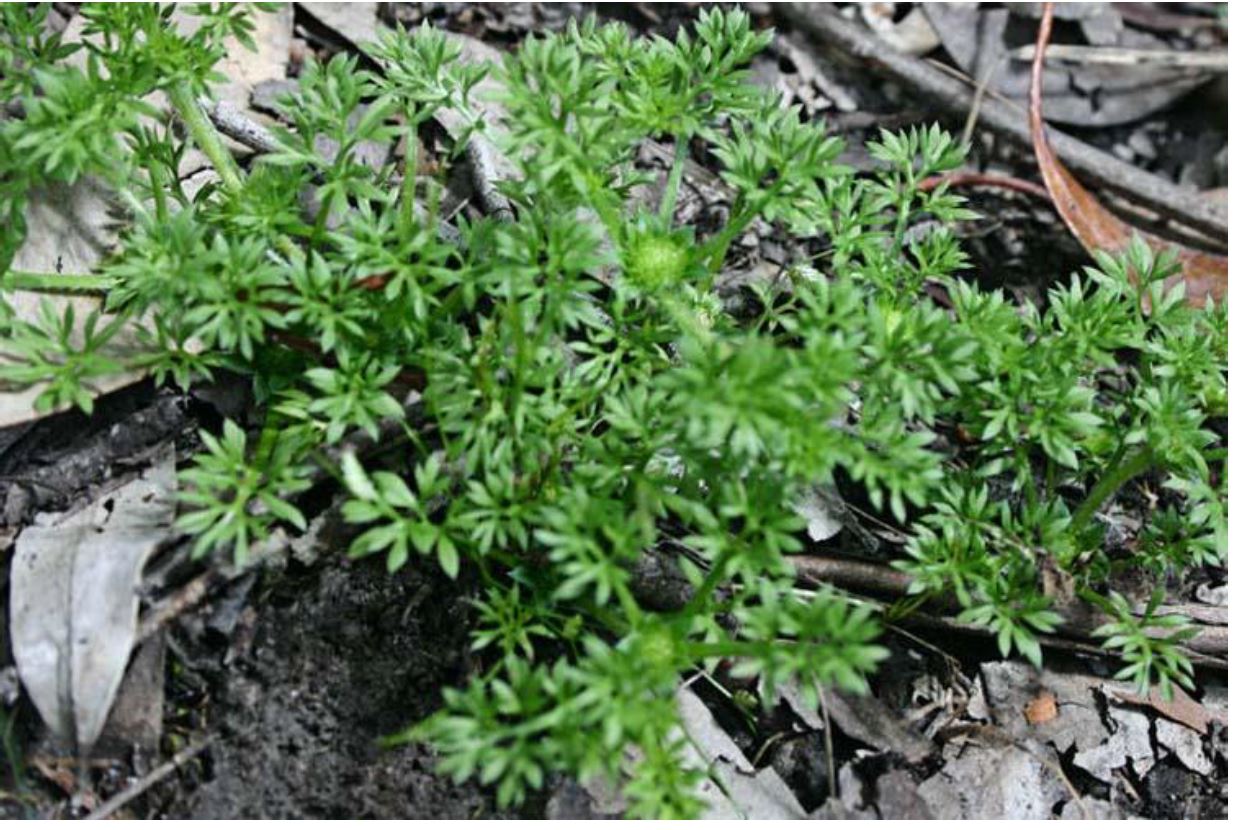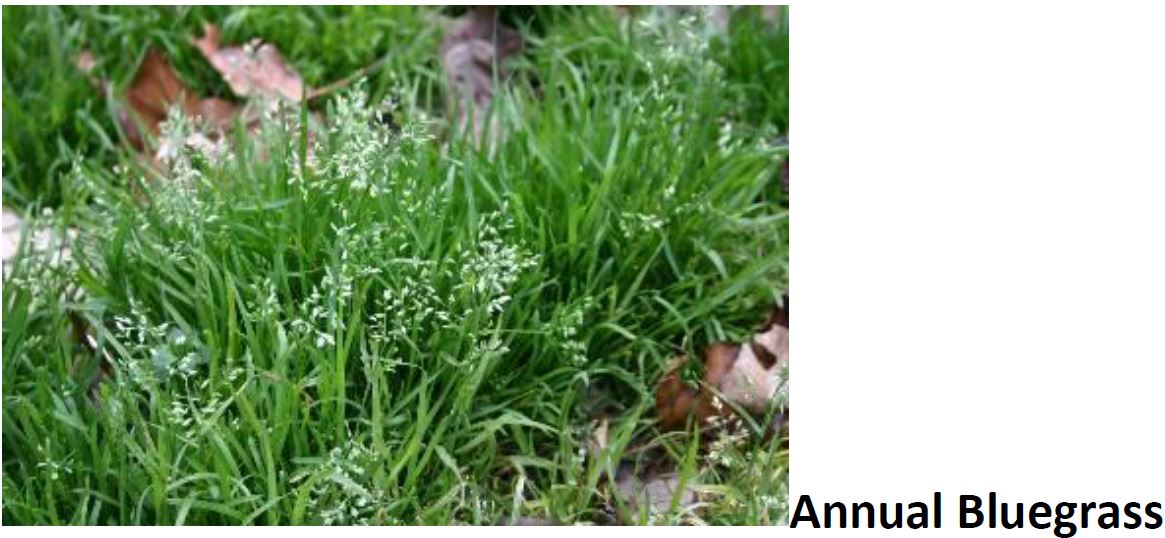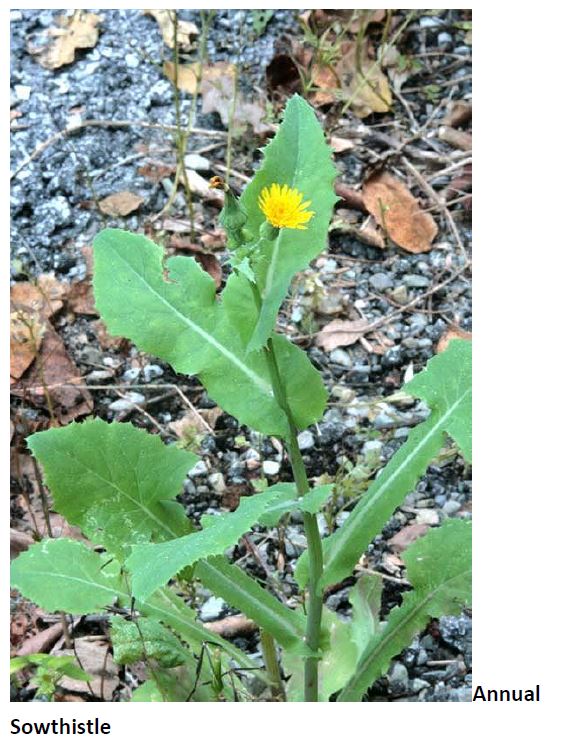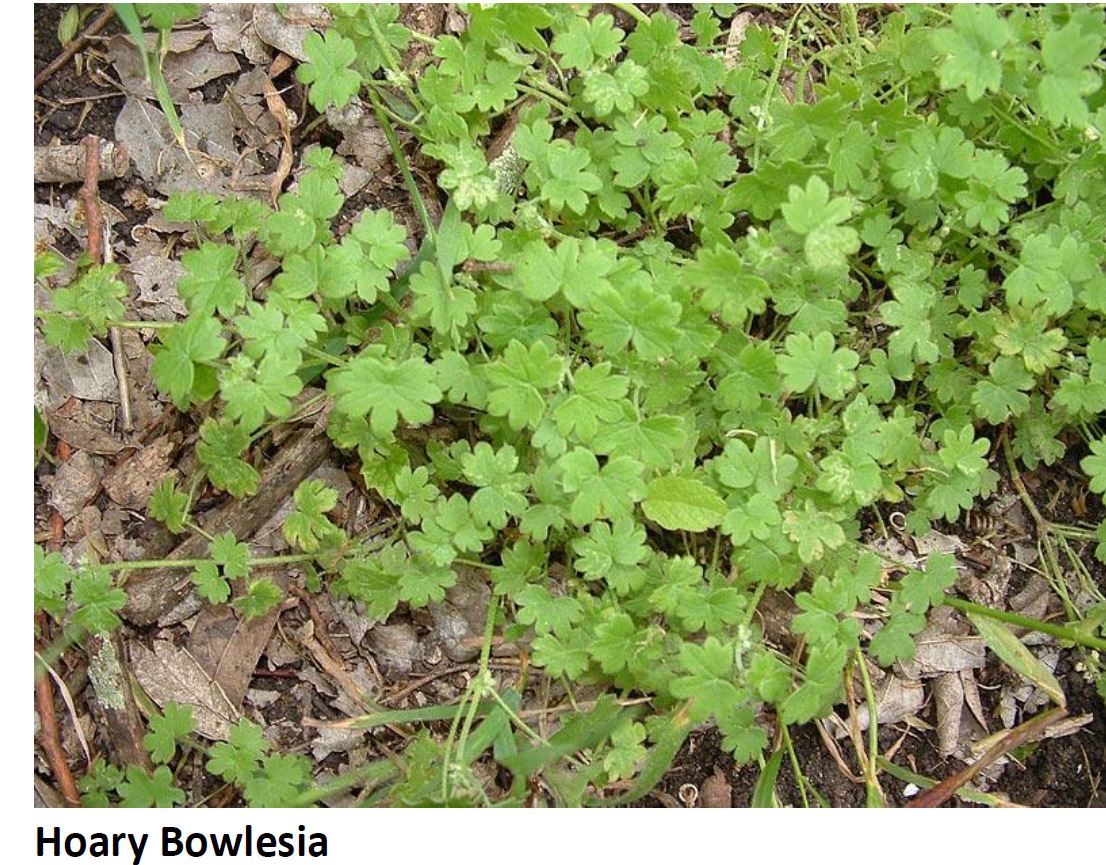Burweed
Richard L. Duble, Turfgrass Specialist
Texas Cooperative Extension
Text and images copyright © Richard Duble.
Carpet burweed or lawn burweed (Soliva spp.), a cool season annual introduced from South America, has become a nuisance on golf courses, athletic fields, parks and lawns throughout much of Texas and the Southwest. The weed becomes a real nuisance when the seed matures in the spring because the sharply pointed spines on the seed can easily pierce the skin. Burweed becomes a deterrent to the use of athletic fields, parks and playgrounds in the spring when the seed mature. On golf courses, burweed invades even the most closely mowed putting greens as well as fairways, tees and roughs.
Description. Burweed is a small, low-growing annual plant. In an unmowed site, it only reaches 2 inches in height and the individual plants may spread out to about 6 inches in diameter. Leaves are pinnately divided giving the plant a feathery appearance. The seed enclosures are flattened, callous structures terminating in teeth on spines.
Burweed emerges in early fall and matures in the spring. The vegetative part of the plant dries up in May and the seeds remain to germinate the next fall. Populations of the weed may become so high that plants cover the ground like a carpet-thus, the name “carpet burweed.” Where grassy weeds such as annual bluegrass are eliminated by the use of preemerge herbicides, populations of burweed increase dramatically in following years.
Control. Like most broadleaf weeds, burweed is easily controlled in the seedling stage with hormone-type herbicides. Products containing 2,4-D, MCPP and dicamba will control burweed in the seedling stage.
Preemerge herbicides are generally not effective for burweed control. In fact, burweed populations increase where preemerge herbicides reduce the competition. Simazine and atrazine are exceptions in that they effectively control burweed.
Other cool-season annuals that will go away during April and May and will not come back until next fall around the end of September and October are pictured below. These should be controlled with an application of a pre-emergent herbicide in early to mid-September in Colorado County. Most of those listed can also be controlled with a simple post-emergent application of 2,4-D. For increased control, use a product that contains the active ingredients 2,4-D and dicamba. Some products have an extra one or two ingredients in addition to 2,4-D and dicamba, and that’s even better.
Products such as the Ortho Weed B Gon Max for Southern Lawns, or the Bayer Southern Weed Killer for Lawns are good options, as well as others.













